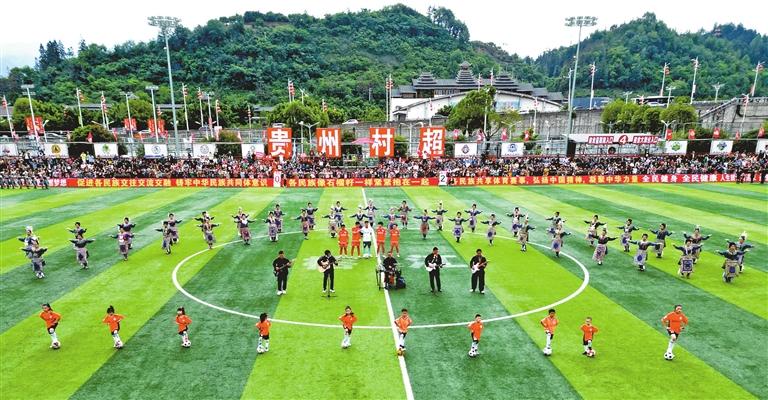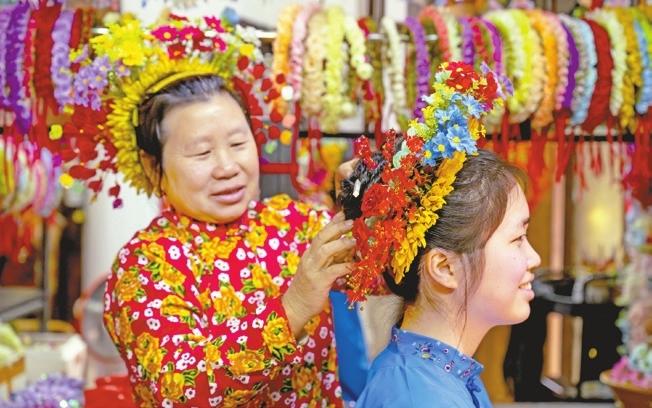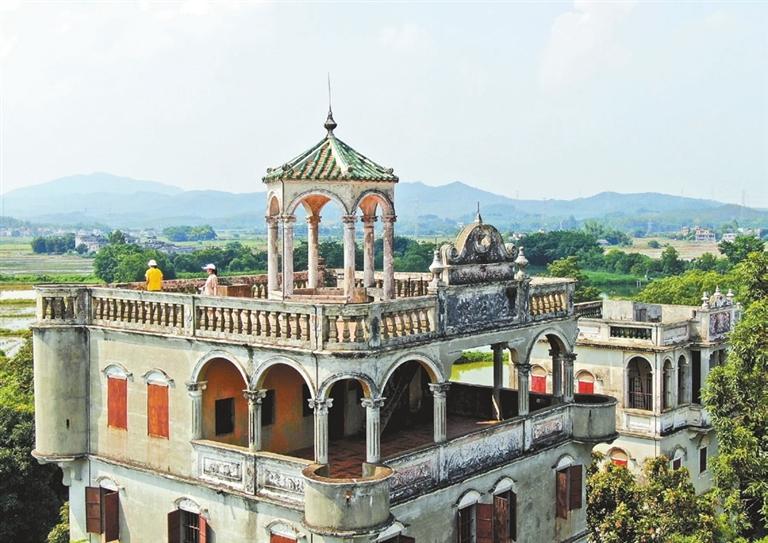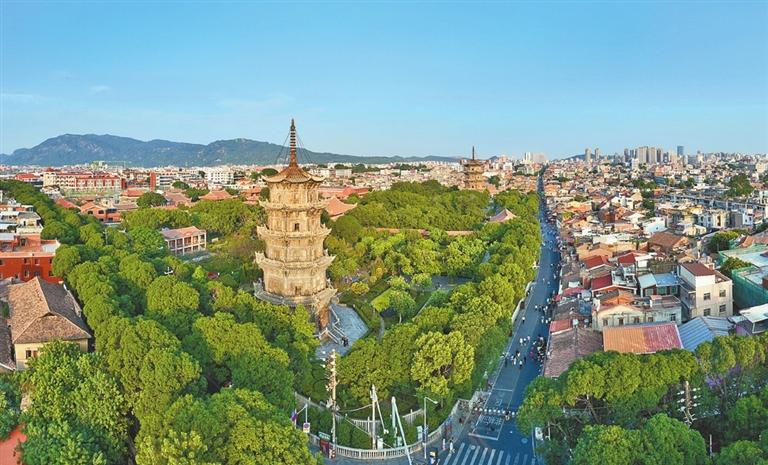




Tang Li 654030846@qq.com IN recent years, a group of small towns have unexpectedly risen to fame on Chinese social media platforms and put themselves on the map of must-visit destinations, each drawing crowds with their unique qualities. Here is a guide to these cities and see if any one of the reasons that start an internet frenzy clicks with you. Tianshui, Gansu Province Located in the northeastern part of Gansu, about 338 kilometers from provincial capital Lanzhou, Tianshui is an ancient town on route of the Silk Road with a long history and rich culture to explore. Reason for fame: ready-to-eat spicy hot pot (malatang) During the 2024 Chinese New Year, a netizen posted a candid video of Tianshui’s spicy hot pot on social media. The attractive street snack quickly garnered 1 million likes, igniting cravings among internet users and luring food enthusiasts to the city for a first-hand experience. Must-visit spots: The Maijishan Grottoes is listed as one of four “Great Grottoes” in China alongside those in Dunhuang, Luoyang and Datong. If the Mogao Grottoes are considered a mural museum, the Maijishan Grottoes are a sculpture museum. The site currently preserves 221 caves, 10,632 mud sculptures and stone carvings, and over 1,000 square meters of murals. According to historical records, the Maijishan Grottoes were excavated during the Later Qin (384–417) of the Sixteen Kingdoms Period. The caves were carved in different dynasties bearing the unique traits of their times. Other recommended spots include the Fuxi Temple, a complex of temple buildings dedicated to the legendary ancestral figure of Chinese civilization Fuxi; Tianshui ancient city; the Immortal Cliff; and the Jingtusi Temple. Quanzhou, Fujian Province Quanzhou, famed as the starting point of the ancient Maritime Silk Road, is now a UNESCO World Cultural Heritage site. Reason for fame: Xunpu flowery headwear (zanhuawei) The Xunpu flowery headwear is a traditional Chinese hairstyle popular among women in various regions in Quanzhou, most notably Xunpu Village. This particular hairstyle involves decorating the hair with vivid, colorful floral arrangements and hairpins, making it a cultural as well as an aesthetic expression. Must-visit spots: Tucked away in the renowned West Street in Quanzhou, Kaiyuan Temple is the only ancient temple in Fujian recognized as both a national Buddhist temple and a cultural heritage site. With a history spanning over 1,300 years since its construction in the Tang Dynasty (618-907), this temple is worth visiting with the Hall of Four Heavenly Kings, the Ganlu Altar, and the Hall of Great Heroes with its 86 large columns and intricate stone carvings. The oldest existing stone beam bridge in China, Luoyang Bridge, located on the Luoyang River in the eastern outskirts of Quanzhou, stands as a testament to ancient bridge engineering. Built over 900 years ago during the Song Dynasty (960-1279), the bridge has undergone 17 renovations. This marvel of engineering ingenuity features intricate details such as boat-shaped piers, stone lions, pavilions and stone pagodas. Other notable attractions include Qingyuan Mountain, Old Monarch Rock (Laojunyan), and Qingjing Temple. Rongjiang, Guizhou Province Rongjiang County located in Qiandongnan Miao and Dong Autonomous Prefecture lures tourists with its rich ethnic diversity, with over 80% of its residents from 16 ethnic minority groups. Reason for fame: cunchao Cunchao, or village super league, became a national sensation in 2023 as it amassed more than 5.8 billion views across social media platforms between May 13 and Oct. 28, enticing 5.19 million tourists to Guizhou. Must-visit spot: At the heart of Rongjiang County lies the famed Sanbao Dong Village. Home to 1,057 households of predominantly Dong but also other ethnic minority people, this village demonstrates the ideal of communal living with its massive interconnected hamlets. Within the lush environs of the village, visitors witness a living tapestry of Dong cultural traditions, including the art of weaving using handlooms. Commanding attention at the village square is a remarkable white marble sculpture of a pair of star-crossed young lovers, whose story has been adapted into a movie and a dance show. Jiangmen, Guangdong Province A transportation hub linking the cities of the Pearl River Delta with the west of Guangdong, Jiangmen shines as a “capital of overseas Chinese” for being the home of more than 5.3 million overseas Chinese spread across the globe. Reason for fame: setting for TV series “The Knockout” Jiangmen’s mixed cityscapes of traditional Chinese structures like diaolou alongside modern architecture have made the city a preferred backdrop for filmmakers seeking a fusion of old-world charm and contemporary appeal. It catapulted into the spotlight with the success of the hit TV series “The Knockout,” which features the cityscape of Jiangmen as the fictional “Jinghai City.” Must-visit spots: Changdi Scenery Street, stretching 0.8 kilometers and featuring Lingnan-style “qilou” architecture, houses a myriad of cultural attractions, upscale bars, cozy cafes, and boutiques. A walk down the street offers a time-traveling journey through the architectural splendor of the 1920s and 1930s, where the fusion of Eastern and Western aesthetics is on full display. Venturing beyond the city’s core, the enchanting diaolou structures in Kaiping County beckon exploration. These buildings take three forms: communal towers built by several families and used as temporary refuge, residential towers built by individual rich families and used as fortified residences, and watch towers. These iconic buildings blend intricate Chinese and Western design elements into a harmonious symphony of form and function, and 20 of them have earned the UNESCO World Heritage status. | 
